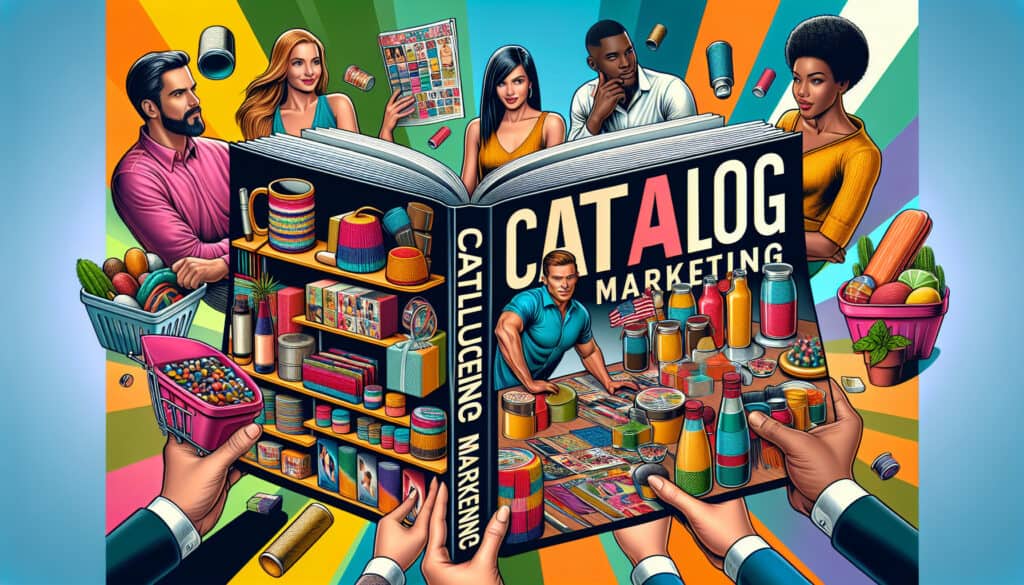A form of direct marketing where a company mails a catalog of its products to a list of potential customers.
- Methodologies: Customers & Marketing, Economics
Catalog Marketing

Catalog Marketing
- Branding Strategies, Consumer Experience, Customer Experience, Digital Marketing, Marketing Strategy, Product Development, Product Management, Target Audience
Objective:
How it’s used:
- A company designs and distributes a printed or digital catalog that showcases its products, which customers can then use to place an order directly via mail, phone, or online.
Pros
- Can reach customers directly in their homes, allows for visually rich product displays, and can target specific customer segments.
Cons
- High costs for printing and postage, declining effectiveness in the digital age, and can be perceived as junk mail, leading to low response rates.
Categories:
- Customers & Marketing
Best for:
- Directly reaching and selling to a targeted list of consumers through a printed or digital product catalog.
Catalog marketing is widely utilized in industries such as retail, fashion, home goods, and specialty products, where visual representation of goods can significantly influence purchasing decisions. During the product development phase, teams may work closely with marketing professionals to determine which products to highlight, ensuring that compelling imagery and detailed descriptions are crafted to engage the target audience effectively. Companies can analyze consumer behaviors through data collected from previous catalog campaigns, allowing for the refinement of product selections and marketing strategies to better match customer preferences. Direct mail campaigns often run in conjunction with digital catalogs, enabling cross-channel promotions that encourage customers to interact with the brand in multiple ways. Collaborative efforts usually involve graphic designers, copywriters, and marketing analysts who work together to create a cohesive and engaging catalog that resonates with the intended demographics. Brands that focus on specific niches, such as eco-friendly products or luxury goods, can tailor their catalog approach to showcase their unique value propositions, establishing a strong connection with their audience. The utilization of QR codes or augmented reality features within digital catalogs has further enabled interactive experiences, enhancing customer engagement and streamlining the purchasing process. In cases where catalog marketing is employed, it is common for sales teams to follow up directly with leads generated from catalog responses, providing personalized customer service that can drive sales conversions.
Key steps of this methodology
- Identify target customer segments based on demographics and purchasing behavior.
- Create a visually appealing layout and design for the catalog that aligns with branding.
- Develop high-quality product descriptions and imagery that showcase features and benefits.
- Incorporate clear pricing, promotions, and call-to-action elements for easy ordering.
- Choose distribution channels (printed or digital) based on customer preferences and behavior.
- Monitor customer feedback and sales data to refine future catalog iterations.
- Implement A/B testing on different catalog designs for optimization.
- Plan seasonal or thematic updates to maintain customer engagement and interest.
Pro Tips
- Utilize A/B testing for different catalog layouts and messaging to identify which strategies resonate most with specific demographics.
- Incorporate QR codes or augmented reality elements for enhanced interactivity and direct integration with e-commerce platforms.
- Leverage data analytics to segment customer preferences and optimize catalog distribution based on purchase behavior and engagement levels.
To read and compare several methodologies, we recommend the
> Extensive Methodologies Repository <
together with the 400+ other methodologies.
Your comments on this methodology or additional info are welcome on the comment section below ↓ , so as any engineering-related ideas or links.
Historical Context
1960
1980
1983
1990
1995
2000
2010
1950
1980
1980
1986
1994
1995
2000
(if date is unknown or not relevant, e.g. "fluid mechanics", a rounded estimation of its notable emergence is provided)














Related Posts
METS to Calories Calculator
Meta-Analysis
Message Mapping
Mental Model Diagrams
Maximum Acceptable Pushing and Pulling Forces
Material Requirements Planning (MRP)